Some thoughts on hot air soldering equipment
A hot-air station has 2 main parts. The heater and the blower. The heater is always in the handpiece and its function is to heat the air that flows through or over it. The big difference between stations is how well the heater is able to heat the air. The air tries to cool down the heater and the construction must be so optimised that it can do that. That maybe sounds wrong but is logical if you think about it. If the air does not cool the heater, the air will not get hot. To complement that there must be enough power to keep the element hot.
To get a good heat transfer the heater must have a big surface in contact with the air, but without obstructing to much airflow. And it must heat the air, not the handpiece tubing because that is lost/waisted to the outside the wrong way (it should go straight to the spot you are heating).
To keep the heater as hot as needed, it is controlled by the temperature controller. This seems a light task but there are some traps. It must know the temperature, so measure it, ideal would be like outsize the nozzle at the component you are soldering. As you understand, that would not be practical. You need to measure the air and not the element itself. The designer has to find the spot that is optimal for the heater and handpiece construction. In the flow, close to the output, far enough from the hot heaterwire.
An other point is the response time. If the air is 300 degrees the handpiece tube will be hot, the heater will be over 300, the nozzle will be close to 300 and all this has thermal mass. If you cut the power everything starts to cool down but not at once so the controller has to do that in such a way the heat will not go over the set temp. And it must start applying power before it drops to far because heating air is not instant. But for hot air this is not very difficult. For normal soldering stations this is a lot harder, the tip is a “big” heatreservoir. There are several ways to regulate the air. You can feed the element with AC and use a triac as “dimmer” You can PWM, you can just switch the power on/off , you can even regulate the hight of the voltage or the current and there are probably more ways. In cheap stations the heater is most times powered direct by the mains power (230 or 120VAC) and controlled with a triac. The isolation between the 230V and the outside of the handpiece is often just 1 or 2 layers of paper. You can also use a transformer and a lower voltage. Often 18 to 24V this is safer (the transformer also isolates the handpiece from the mains, but big transformers are expensive. And you can use an isolated switching powersupply.
However the most important part is the design of the heater. This can be done in many ways. The best designs have a lot of hot material in contact with the airflow. Bad designs loose a lot of heat to the outside tube of the handpiece and/or only a small part of the air is heated and a lot blows unheated out the nozzle.
The picture of the JBC shows a “maze” of wire. This is a very good way to get a lot of heat into a lot of air.
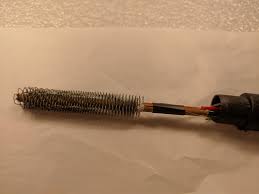

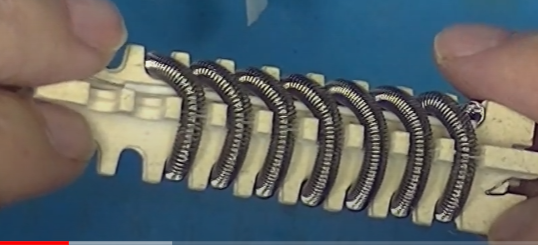
The picture of an Atten 858D station that is sold under many names. And even more use the same handpiece. These are 4 rather big “channels”, airflow is good but heattransfer not optimal. The resistance wire is coiled thighed that limits airflow there where you want it, the center gives an unrestricted flow with no heated wire. To make it worse, the wire is only separated from the metal outside tube by some paper and almost touching the tube. A lot of heat is lost in that tube this way. There are many cases to find on the web of things like melted handpieces thanks to this design. This is a very bad design.
However, there are many heaters used in the same looking station.
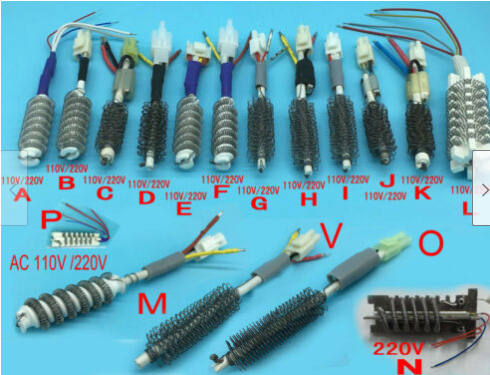
This is just a collection of all sorts of heaters for all kind of stations.
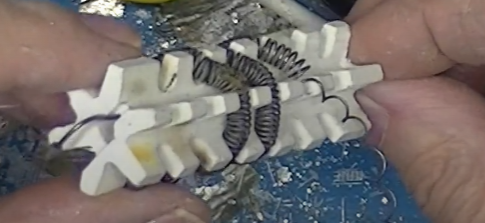
Here you see the same station but this time a 6 channels and a more open coil. This will give a better heating. However, it died.
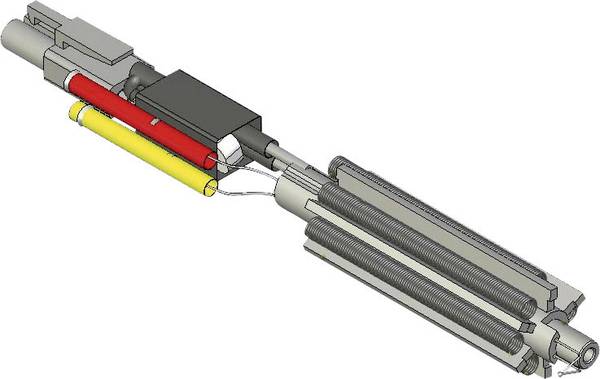
This is an other type of construction used in good stations. The channels are now “filled” with the tight wire coil and there is a lot of contact with the air.
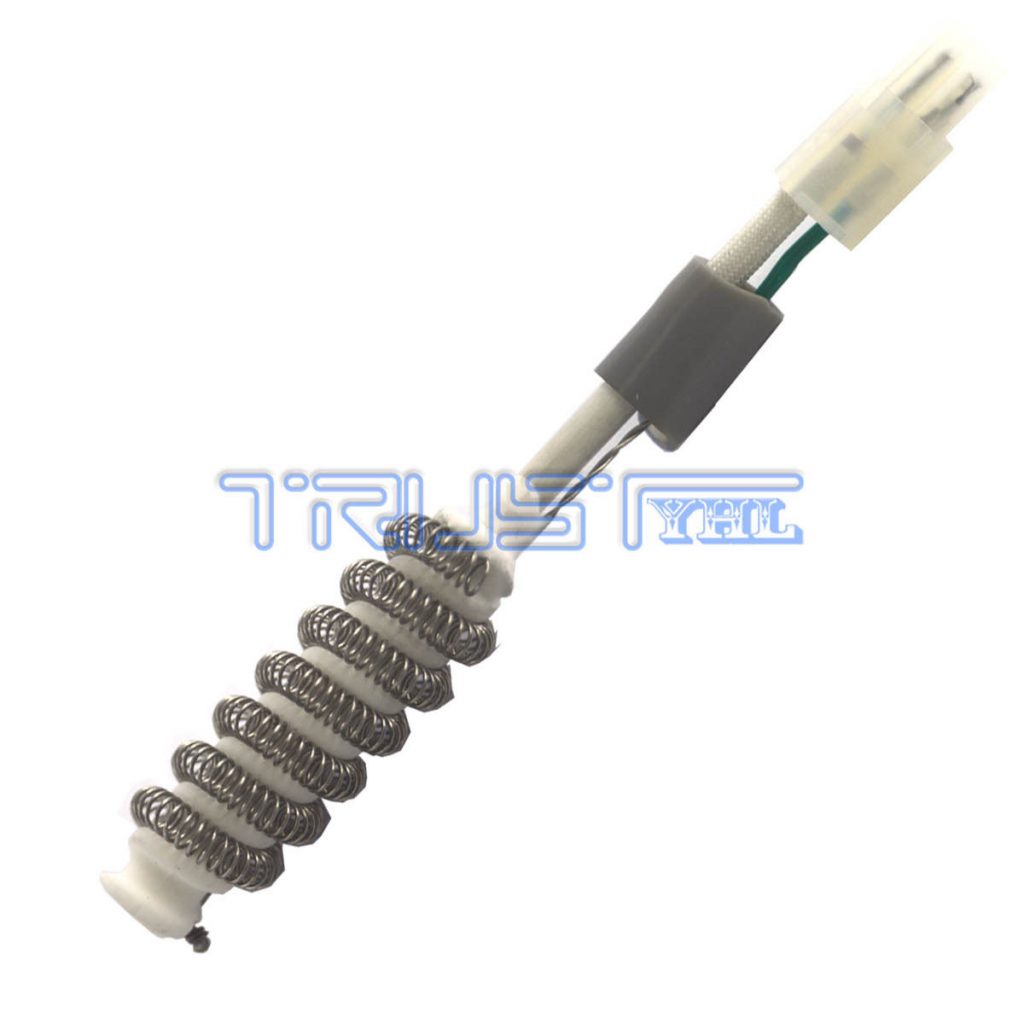
If the tube is close enough to the coil, but not to close there is a decent contact with the airflow. If the tube is to wide it will be worse as the 4 channel one.
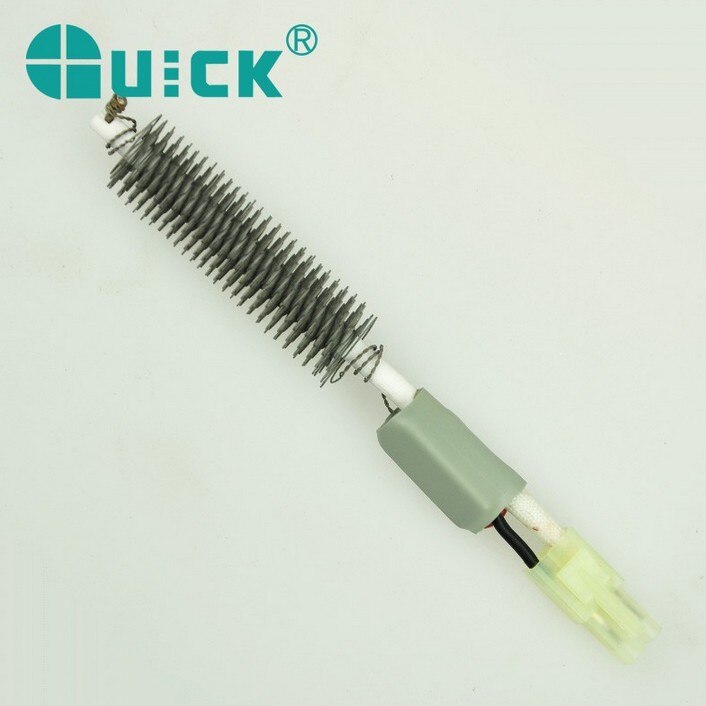
This is one of the better Chinese stations. You see a construction like JBC uses.
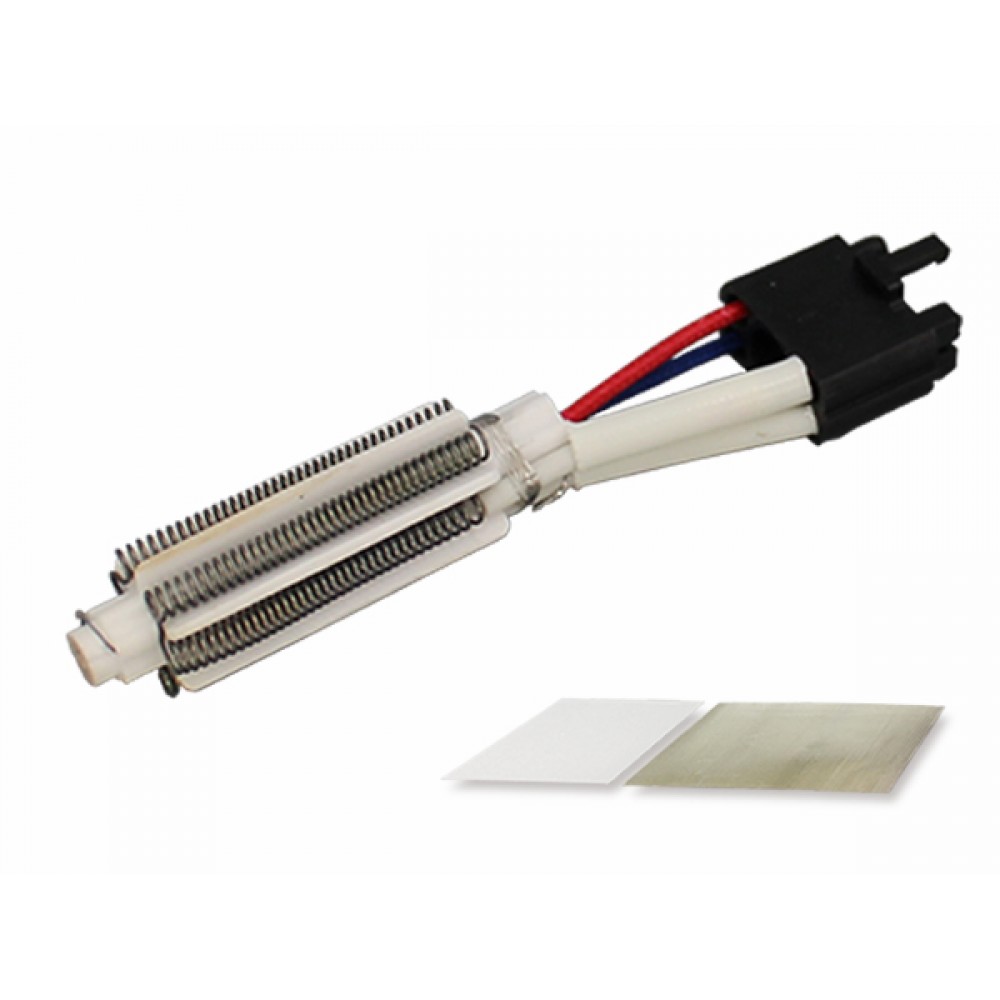
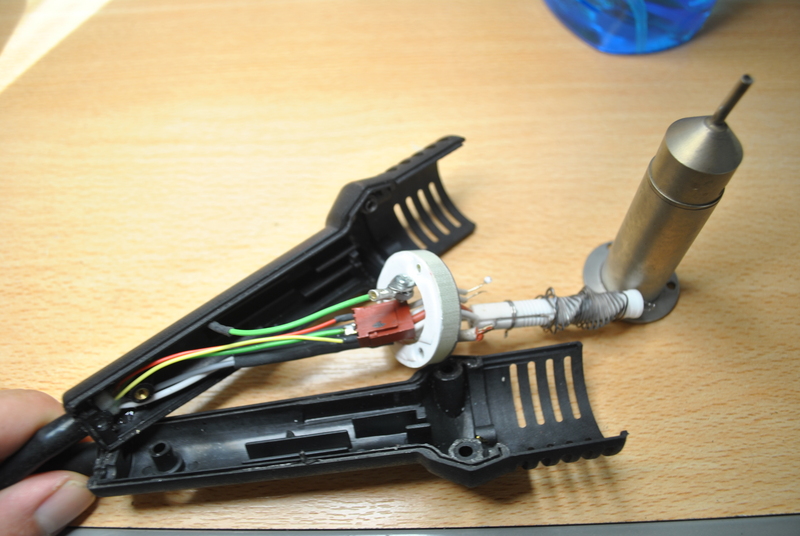
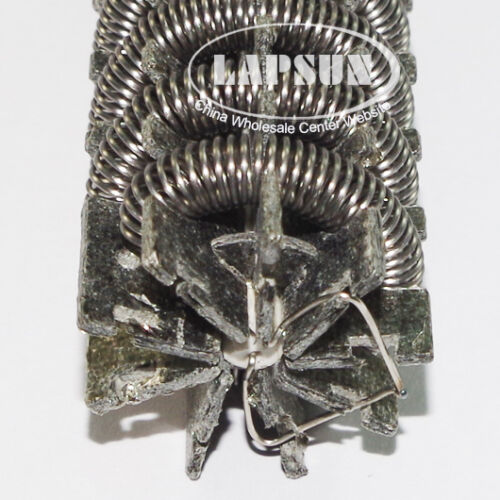
This is a non ceramic replacement for Atten and lookalikes. Not so robust but I think the aircontact is better here.
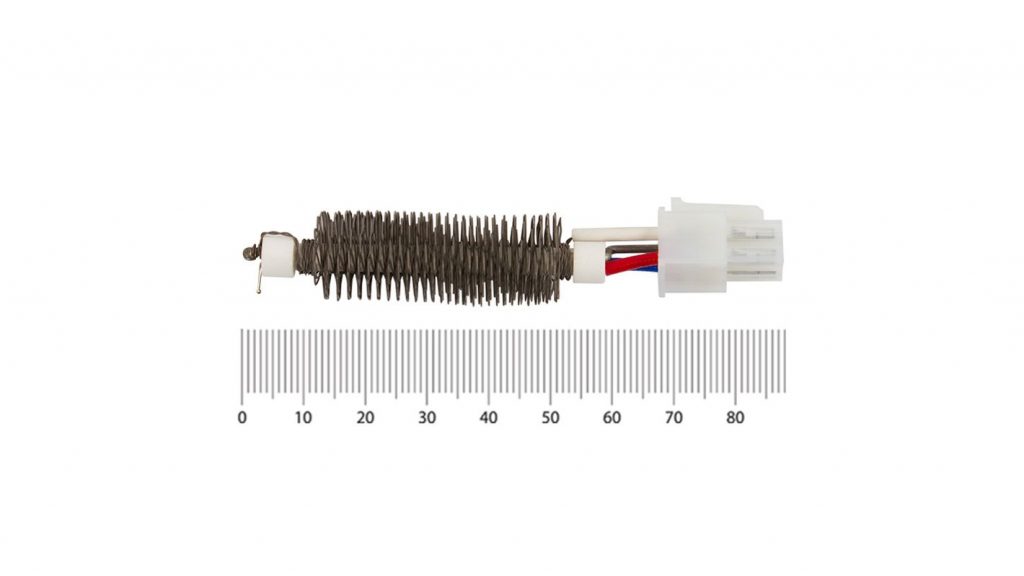
The heater above for an Aoyue station has a nice mounting for the thermocouple that measures temperature. Far enough from the heater and close to the nozzle full in the airflow. This will probably work well (if they do not screw up other things)
There are several ways to make the airflow. All the good brands have a big pump (diagram , piston or fan) in the station, all the crappy stations have a little squirrel fan in the handpiece. As long as there is enough air and the system does not leak, is will function. But wear and tear or noise can be a thing. The cheap crappy fans with no good bearings etc will not last long. The amount of air of the handpieces with the crappy fan deliver is depening on the RPM of the pump. I do not know how they accomplish that. The fans I have seen are minimalistic and have only 2 wires.
In decent stations the pump is in the cabinet for the simple reason that it can be much bigger, better bearings, better flow control possible. They use squirrel cage fans and membrane pumps.
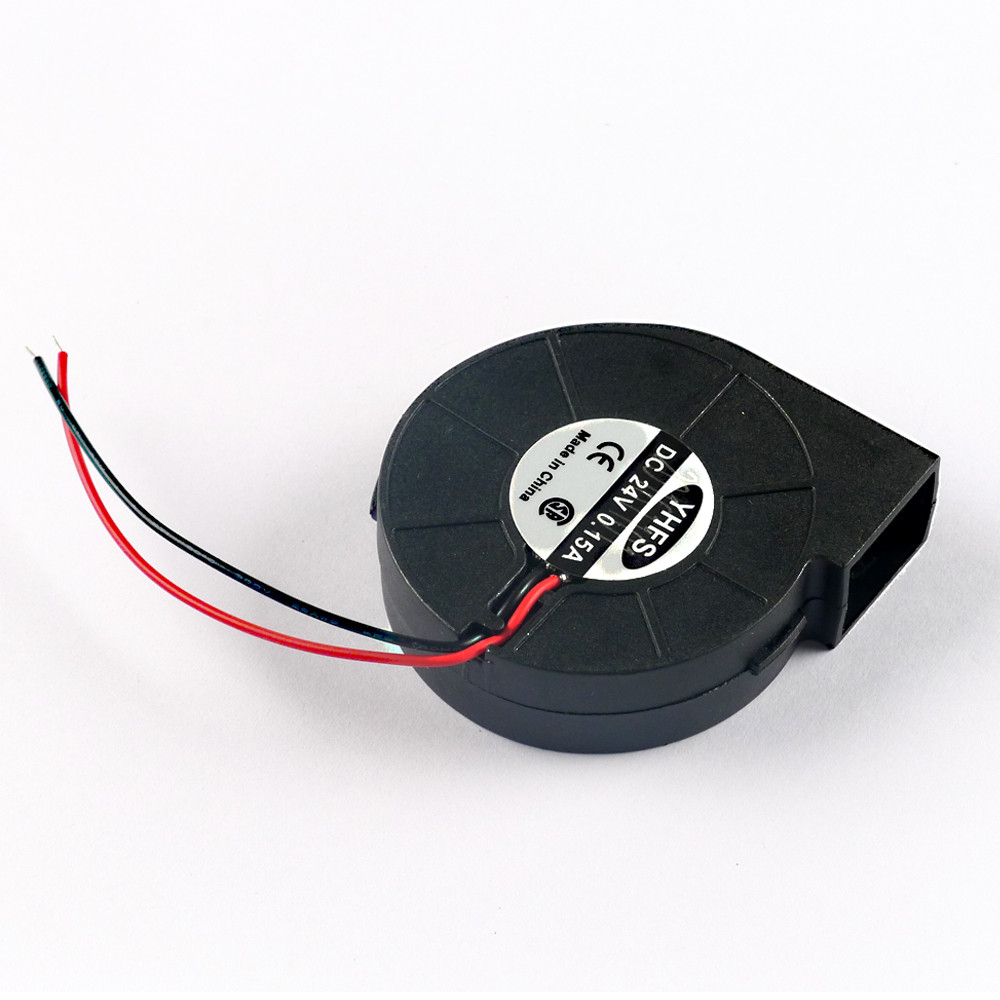
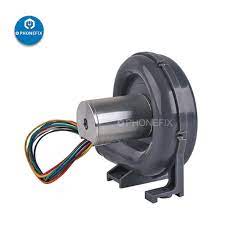
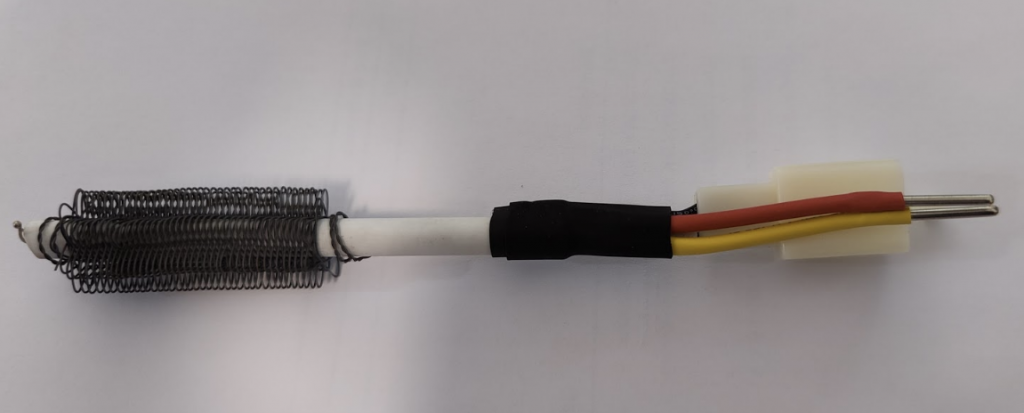
There is an other thing, the Chinese copy everything and there is a lot fake. Atten is a Cheap brand but makes usable testgear (a lot of Chinese crap is to be honest, not really usable and falls in the category, better as nothing) On their European website they show this as a replacement heater. But I have not seen this type of heater in reviews or teardowns. Maybe they make different versions for different markets, they just use what is cheap to get, this heater is only used in more expensive models or a lot of what you see in those teardowns is fake stuff branded Atten.
Note: The Atten above is a bit the same design as f.i. a JBC but the element is a lot shorter. However, probable better as the others for/from Atten shown on this pages.
As you see, there are many designs and be careful, if they look a like, they do not have to perform the same, or even be the same inside. The length, diameter, format and spacing of the “coil”, airflow through it and the resistance/power will all affect the performance.
Just as a very non scientific guideline. My 900W OKI at 350C, measured 1 cm outside the 7 mm nozzle, airflow half open, removed any smd resistor or ceramic cap from a 1998 computer mobo in a few seconds. A TO220 size SMD mosfet in 15 seconds and a twice as thick version just under a minute. A BGA processor took me 3 minutes .
